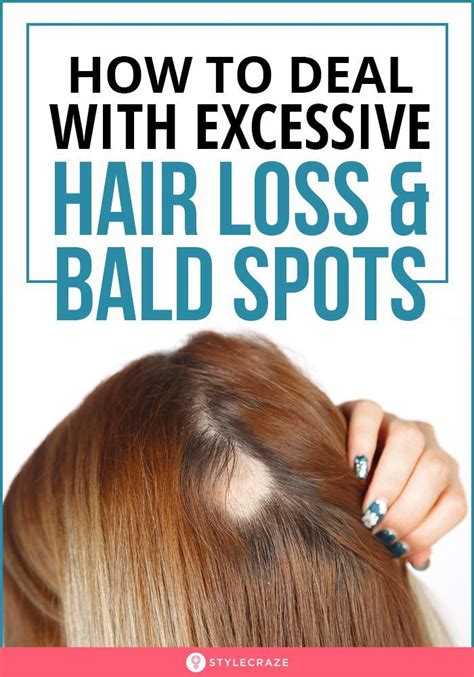Bald head patches, also known as alopecia areata, can be a distressing and embarrassing condition. It is an autoimmune disorder that causes hair loss in circular or oval patches. While there is no cure for alopecia areata, there are a number of treatments that can help to slow or stop hair loss and promote hair regrowth.

Causes of Bald Head Patches
The exact cause of alopecia areata is unknown, but it is thought that it is an autoimmune disorder. This means that the body’s immune system mistakenly attacks the hair follicles, causing hair loss. There are a number of factors that may increase the risk of developing alopecia areata, including genetics, stress, and thyroid disease.
Symptoms of Bald Head Patches
The most common symptom of alopecia areata is sudden, patchy hair loss. The patches of hair loss are typically round or oval in shape and can range in size from a quarter to a baseball. The hair loss can occur anywhere on the scalp, but it is most common on the crown and sides of the head.
In addition to hair loss, people with alopecia areata may also experience itching, burning, or tingling on the scalp. In some cases, the hair loss can be permanent.
Diagnosis of Bald Head Patches
Alopecia areata is diagnosed with a physical exam and a review of your medical history. Your doctor will look for patches of hair loss and ask you about any other symptoms you may have. In some cases, your doctor may order a blood test to rule out other conditions that can cause hair loss.
Treatment of Bald Head Patches
There is no cure for alopecia areata, but there are a number of treatments that can help to slow or stop hair loss and promote hair regrowth. These treatments include:
- Medications: There are a number of medications that can be used to treat alopecia areata, including topical steroids, minoxidil, and immunosuppressants.
- Light therapy: Light therapy involves exposing the scalp to ultraviolet light. This can help to slow or stop hair loss and promote hair regrowth.
- Surgery: In some cases, surgery may be an option to treat alopecia areata. Surgery can involve removing the affected hair follicles or transplanting hair from another part of the scalp to the bald patches.
Prevention of Bald Head Patches
There is no sure way to prevent alopecia areata, but there are a number of things you can do to reduce your risk of developing the condition, including:
- Managing stress: Stress is a major trigger for alopecia areata. Finding ways to manage stress, such as exercise, yoga, or meditation, can help to reduce your risk of developing the condition.
- Avoiding triggers: If you know what triggers your alopecia areata, such as certain foods or chemicals, avoiding these triggers can help to reduce your risk of flare-ups.
- Getting enough sleep: Getting enough sleep can help to reduce stress and improve your overall health, which can help to prevent alopecia areata.
- Eating a healthy diet: Eating a healthy diet can help to improve your overall health and well-being, which can help to prevent alopecia areata.
Living with Bald Head Patches
Living with alopecia areata can be difficult. The condition can be embarrassing and it can have a negative impact on self-esteem. However, there are a number of things you can do to cope with the condition, including:
- Talk to your doctor: Your doctor can provide you with information and support. They can also help you to find the best treatment for your condition.
- Join a support group: There are a number of support groups available for people with alopecia areata. These groups can provide you with a sense of community and support.
- Use wigs or hairpieces: Wigs or hairpieces can help to conceal bald patches. There are a variety of wigs and hairpieces available, so you can find one that fits your style and budget.
- Try scalp micropigmentation: Scalp micropigmentation is a procedure that involves tattooing tiny dots on the scalp to create the appearance of hair follicles. This can help to conceal bald patches and give you a more natural look.
Conclusion
Alopecia areata is a common condition that can affect people of all ages. While there is no cure for the condition, there are a number of treatments that can help to slow or stop hair loss and promote hair regrowth. If you are experiencing hair loss, it is important to see your doctor to get a diagnosis and to discuss your treatment options.
Frequently Asked Questions
Q: What is the success rate of alopecia areata treatment?
A: The success rate of alopecia areata treatment varies depending on the individual and the type of treatment used. However, many people experience significant improvement with treatment.
Q: Is alopecia areata contagious?
A: No, alopecia areata is not contagious. It is an autoimmune disorder, which means that it is caused by the body’s immune system attacking the hair follicles.
Q: Can alopecia areata be prevented?
A: There is no sure way to prevent alopecia areata, but there are a number of things you can do to reduce your risk of developing the condition, such as managing stress, avoiding triggers, getting enough sleep, and eating a healthy diet.
Q: What are the emotional effects of alopecia areata?
A: Alopecia areata can have a significant impact on self-esteem and quality of life. People with alopecia areata may experience feelings of embarrassment, shame, and social isolation.
Additional Resources
- National Alopecia Areata Foundation: https://www.naaf.org/
- American Academy of Dermatology: https://www.aad.org/conditions/alopecia-areata
- National Institute of Health: https://www.nichd.nih.gov/health/topics/alopecia-areata/conditioninfo/Pages/default.aspx
